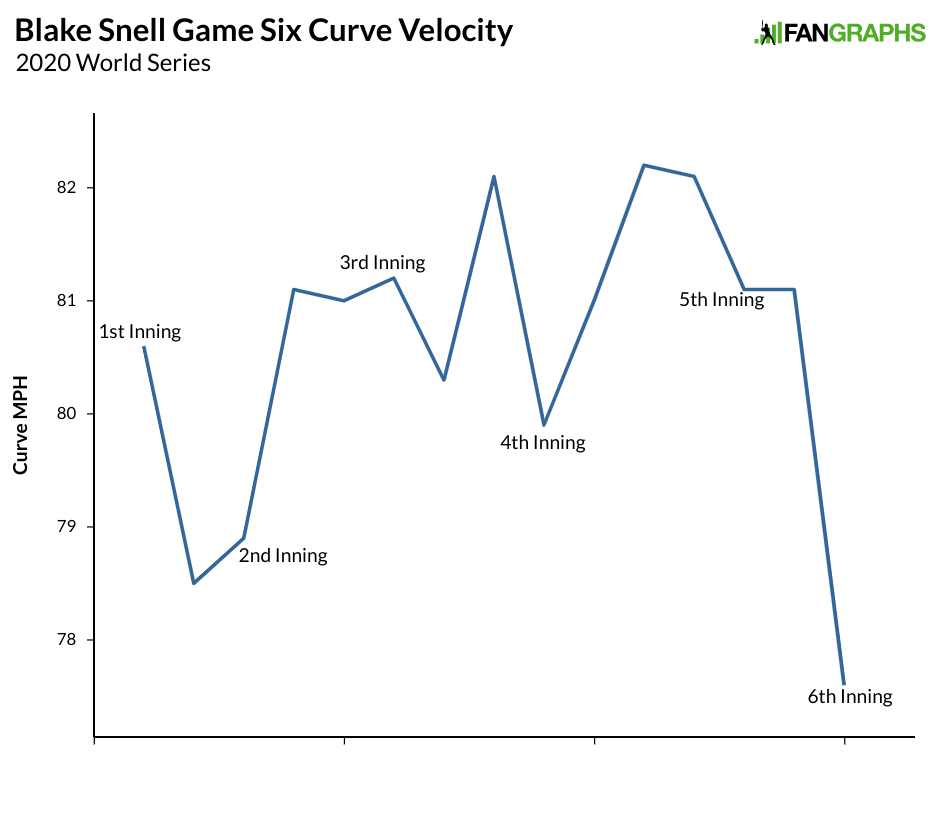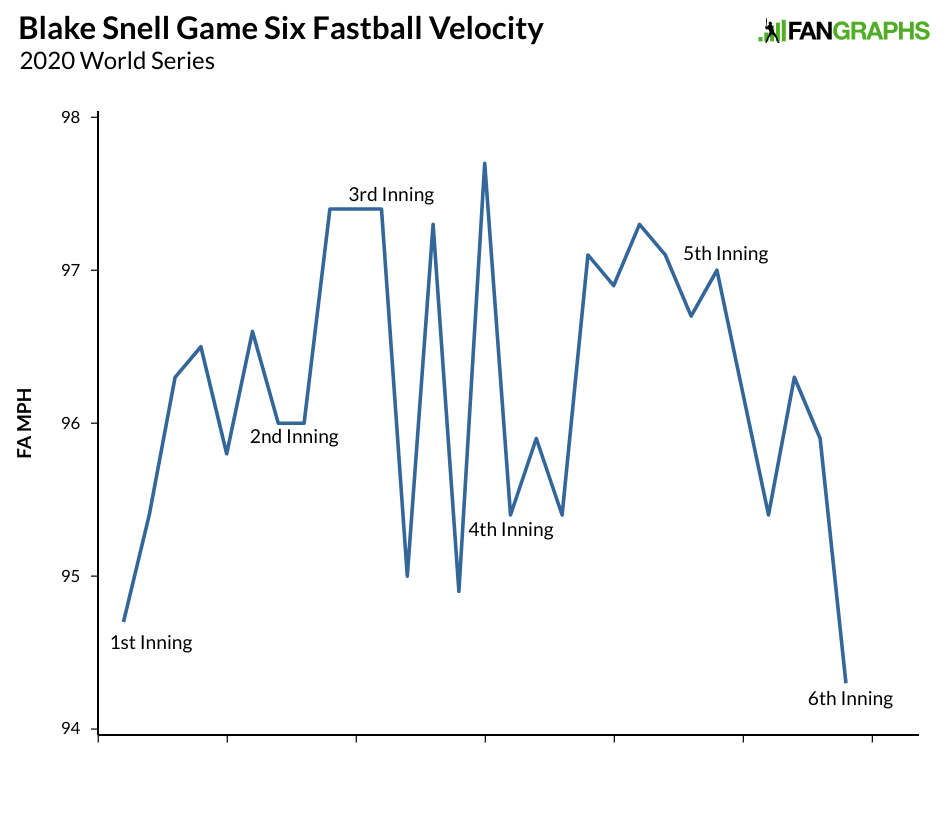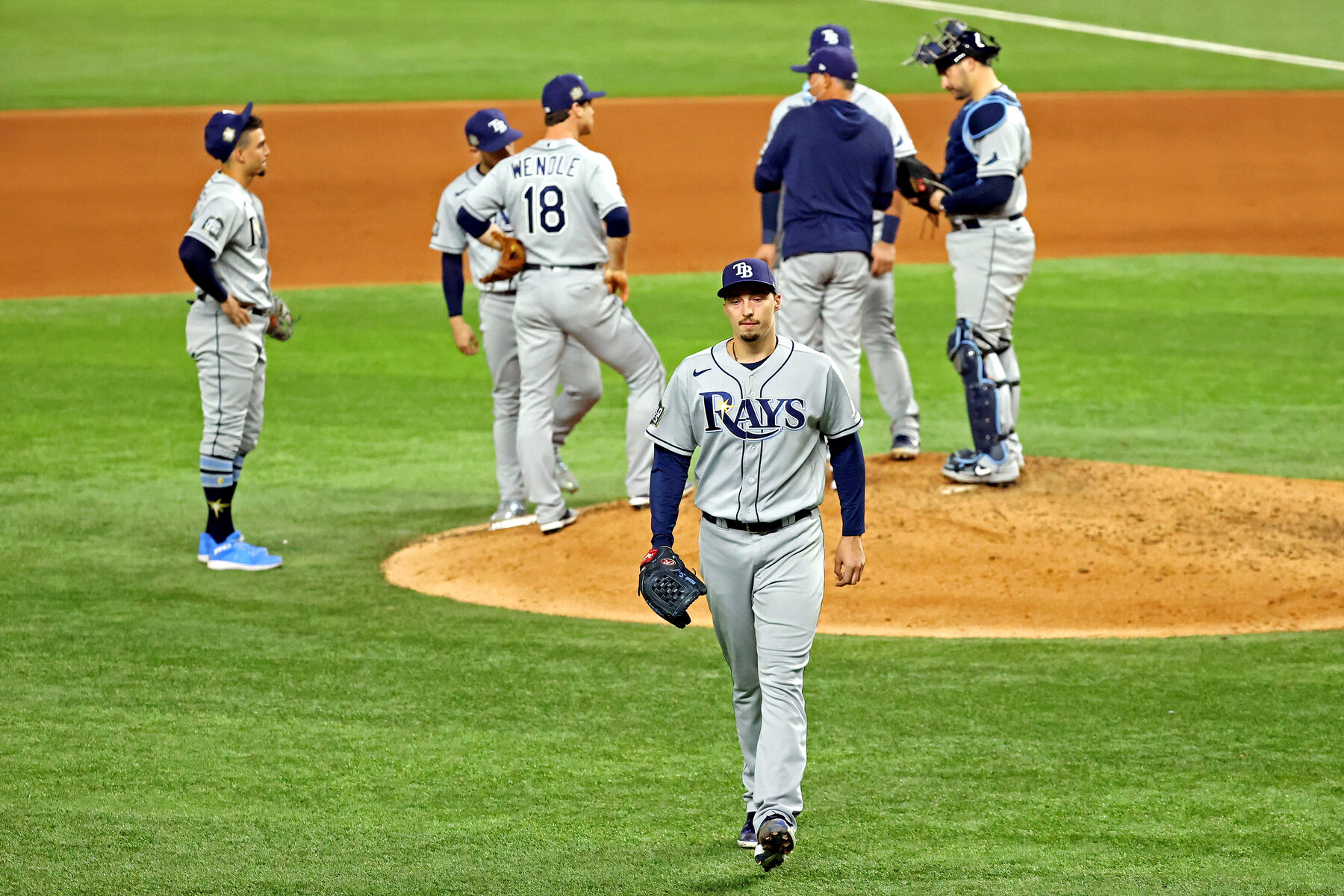
Seven days have passed since Kevin Cash made the contentious decision that many viewed as the death knell of the Tampa Bay Rays in the 2020 World Series — pulling Blake Snell after 5-1/3 scoreless innings. Hell, even I called it a bad move at the time, and in the heat of the moment. Since then though, many analytics-driven sites like FanGraphs, the Athletic, and Baseball Prospectus have come out generally in favor of Cash’s decision, while other more traditional outlets have turned Cash into a pariah. I’ve heard both sides of the discussion, and I have finally at peace with the decision. However, I will say that Cash did make a costly error: he called upon Nick Anderson instead of Diego Castillo or Ryan Thompson.
As a general rule, the performance of a pitcher across the first few innings predicts nothing as it relates to how he will perform across subsequent frames. True, Snell was dominant against the Dodgers through 5-1/3 innings, however, there was no guarantee that he would carry that forward. As Mitchel Lichtman (MGL Baseball) noted, it improved his expected ERA by 1/4 of a run, give or take. Yet that improvement would be negated the third time through the order.

Snell, like most other pitchers, faces some trouble the third time through the order. Over his career, his wOBA jumps dramatically from .263 the first time through the order to .321, while his SLG tops out at .413. In 2020, his .913 OPS allowed the third time through the order is far worse than what a fresh reliever should have been able to hurl.


Furthermore, there is evidence that Snell was tiring. Both Snell’s fastball and curveball velocity dropped precipitously. For reference, a pitcher with a fastball at 94 mph, instead of 96 mph, is about a half-run of ERA worse. And once his velocity started to fall, it was likly to continue until he ran into trouble.
As Eno Sarris (the Athletic) detailed, “His last fastball against Austin Barnes was his slowest fastball of the night, and a full tick below where he’d been sitting so far in the game. And Snell has been, in his career, 23 percent worse than league average when it comes to third-time through the order. If his personal splits in that might not matter (we’re still only talking about 432 regular-season plate appearances in which he’s seen a lineup a third time), the league has established third-time through the order splits that matter. Snell had not finished the sixth inning all season.”
Snell’s fastball to Barnes was two miles per hour off his average during the contest. Craig Edwards (FanGraphs) noted that when Snell’s fastball was at least 95 mph during the regular season, he coaxed swings-and-misses on 13% of pitches. However, when his fastball velocity fell under 95 mph, his whiff rate was just 9%. That was on display during Game 6. Snell got four swings and misses on his seven hardest fastballs of the night, and six on his hardest 13. Yet on the 16 pitches below 96.5 mph? The left-hander induced just two whiffs.
Put simply, Snell did his job quite effectively but he was getting tired and he was set to face the top of the Dodgers’ order for the third time.
Cash was in control of arguably the best bullpen in baseball — the stable as it were — with a good number of arms that had proven fairly successful against Los Angeles up to that point. And staked to a 1-0 lead against a team that hadn’t been shutout all season, the choice was about who would be the most effective hurler to replace Snell. This is where I believe Cash made the wrong decision.
Cash went with Anderson, who held opponents to a .091 BA/.138 OBP/.182 SLG/.320 OPS line during the regular, which was better than even Snell’s first time through the order stat line. However, Anderson had struggled in the postseason.


The vertical movement on his fastball had dropped by almost two inches since the start of 2019, while his heater was down almost two full ticks from 2019 to now. Anderson, who regularly lives at the top of the zone, wasn’t able to get his fastball above hitter’s bats, or with the velocity that would make the pitch effective. As Sarris put it, “All year he’d had less movement and velo, and as that trend worsened, so did his results.”
After the game, Anderson conceded that he didn’t feel great.
Workload, 2020 season, the whole thing is just crazy, honestly. Not having a normal routine, lifting, the season, everything — it’s been crazy. I didn’t feel as good as I would have liked to, but it’s the big leagues; you’re not going to feel good every time. I was still confident. It wasn’t the situation, it wasn’t being in the World Series or anything like that. Not a lot of gas.
— Nick Anderson
Cash probably should have gone with Castillo or Thompson (and his 59% ground ball rate) to get the outs and use Anderson against the softer back end of the order before handing the ball over to Pete Fairbanks. Or, the Rays offense could have scored more than one run, rendering all of this back-and-forth moot.
At the end of the day, an unpopular decision was made and no amount of prognostication will change the outcome. Cash had made similar decisions all season long, and those moves got the Rays to the World Series with the best record in the American League. Should he have been pilloried for being consistent? In my opinion, probably not.

